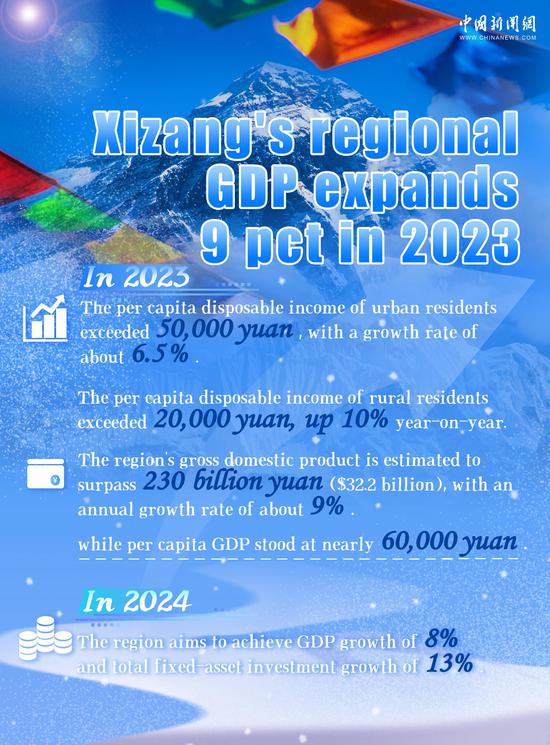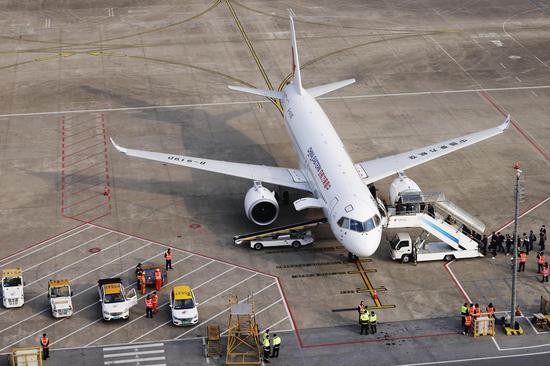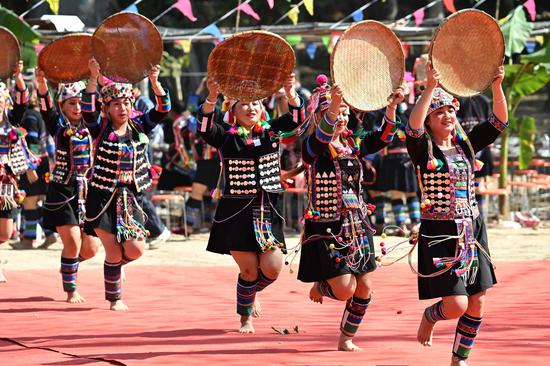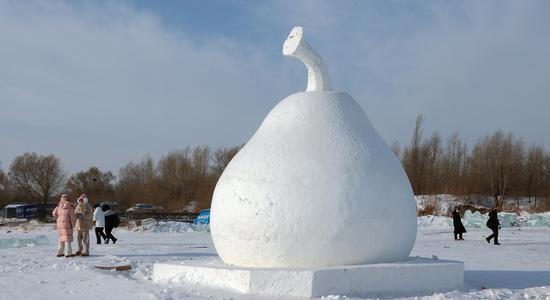The number of patients received at fever clinics in medical institutions across the country has shown a fluctuating decline since the New Year's Day, but there is a possibility of a rebound in the COVID-19 infection epidemic in China in January, according to Chinese health authorities on Sunday.
Mi Feng, a spokesperson with the National Health Commission, said at a Sunday press briefing that since the beginning of 2024, the number of patients received at fever clinics in medical institutions across the country has shown a fluctuating downward trend. At present, respiratory diseases are still mainly influenza, and the infection of COVID-19 is at a relatively low level, with the overall medical services currently stable and orderly.
Recent data from the multi-channel monitoring system showed that the positive rate of COVID-19 virus testing in sentinel hospitals remained below one percent after the New Year's Day holiday, and the proportion of the JN.1 variant strain showed an upward trend, said Wang Dayan, director of the China National Influenza Center, National Institute for Viral Disease Control and Prevention, Chinese Center for Disease Control and Prevention (China CDC).
Experts believe China will continue to experience various respiratory pathogens alternating or co-circulating this winter and in the coming spring, with influenza viruses still dominating in the short term. Due to continuous importation of the JN.1 variant strain, a gradual decrease in domestic influenza, and a decline in population immunity, the COVID-19 epidemic may rebound in January, with the JN.1 variant highly likely to develop into the dominant variant in China, according to Wang.
Wang noted that southern provinces in China entered the influenza season in early October, followed by northern provinces in late October. Initially, the predominant circulating strain was the H3N2 subtype influenza virus.
However, in the past three weeks, the proportion of influenza B virus in southern provinces has increased to 36.8 percent, and in the past five weeks, the proportion in northern provinces has risen to 57.7 percent. In some provinces, the proportion of influenza B virus has exceeded that of influenza A.
Wang said it is difficult to distinguish between seasonal influenza caused by influenza A and influenza B viruses in terms of clinical symptoms, and different types and subtypes of influenza viruses usually coexist during the same flu season, but in different proportions.
"The immune response generated after contracting influenza A does not provide effective immune protection against influenza B, which means that even if one has had influenza A during the epidemic season, there is still a possibility of being infected with influenza B," said Wang, noting that high-risk individuals should receive influenza vaccination as early as possible every year.
Wang Guiqiang, director of the Department of Infectious Diseases at the Peking University First Hospital, told a news conference on Sunday that since winter is the peak season for respiratory infectious diseases, the immunity established after infection with various pathogens is not long-lasting, so repeated infections may occur. However, the symptoms of a second infection with the same pathogen are often milder.
Different pathogen infections may worsen the condition, especially after damage to the upper respiratory mucosal barrier, which may lead to secondary bacterial infections. For the elderly and those with underlying diseases, infection with COVID-19 or influenza may worsen their underlying conditions, said Wang, stressing that they should pay more attention to early intervention and diagnosis of respiratory diseases.
Mi added that with the approaching winter vacation and Spring Festival, the large-scale movement and gathering of people may accelerate the spread of respiratory diseases, so it is necessary to strengthen monitoring and early warning.
Moreover, timely health consultation and referral guidance services should be provided to key populations such as the elderly, pregnant women, children, and patients with chronic underlying diseases, as well as convenient conditions for them to receive vaccinations.
Additionally, it is necessary to actively allocate medical resources, optimize the medical treatment process, and ensure the supply of medical supplies. Besides, medical resource reserves should be prepared for common sports injuries, accidents, and cardiovascular and cerebrovascular emergencies during the holiday period to ensure that patients receive timely and effective treatment, according to Mi.


















































 京公网安备 11010202009201号
京公网安备 11010202009201号